Dazzling photos show the July full 'buck moon' reach peak illumination
July’s full moon, known as the “buck moon,” put on a show for viewers by sitting unusually low on the horizon on July 10. It was the farthest full moon from the sun in 2025.
The name “buck moon” is in reference to male deer, or bucks, which start to rapidly grow their antlers this time of year. This year’s buck moon reached its peak illumination at 4:37 p.m. ET on Thursday, which is when it was fully visible and low on the horizon for stargazers in North America.
This full moon was so visibly low on the horizon because of the summer solstice, which kicks off the summer and marks when the sun starts traveling at its highest point in the day. When the sun is at its high peak, the moon travels along a lower path throughout the night, according to Space.com. Due to its low position in the sky, buck moons tend to look a little orange because of Rayleigh scattering, which is the same thick atmosphere that makes us see sunsets as very orange.
A full moon happens when the sun, Earth and moon are in alignment and form a straight line. Since the moon and the sun are on either side of Earth, the sun’s light shines on the moon entirely, making it look fully illuminated from the Earth’s perspective, according to the Farmers’ Almanac.
Even if you missed the buck moon on July 10, the full moon will still be clearly visible over the next few nights, according to Space.com. There are only five full moons left in 2025, the next one being the “sturgeon moon” on Aug. 9, and three supermoons in October, November and December, according to a schedule by the Farmers’ Almanac.
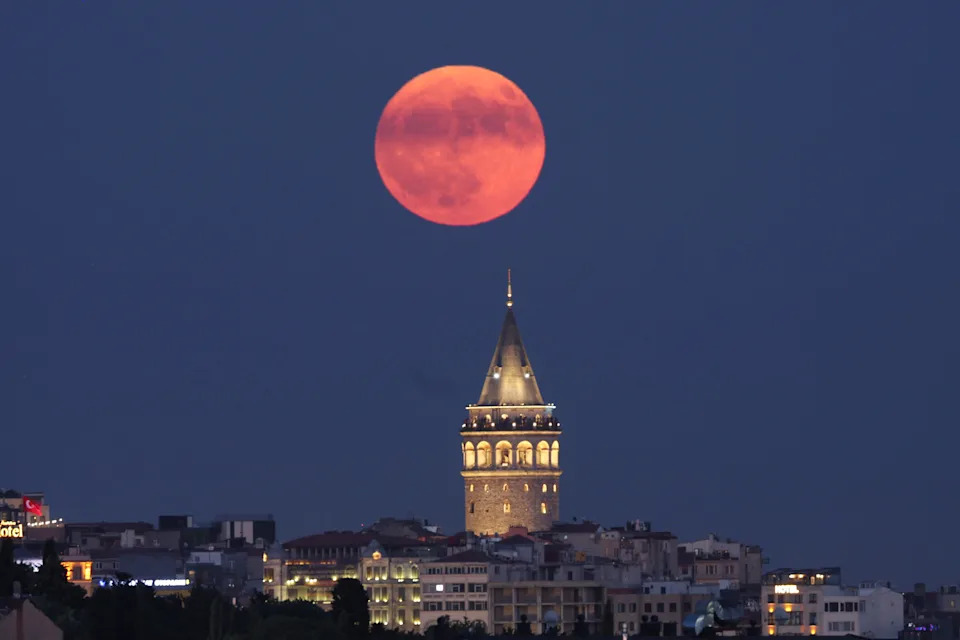 The buck moon rises over the Galata Tower in Istanbul on July 10. (Dilara Senkaya/Reuters)
The buck moon rises over the Galata Tower in Istanbul on July 10. (Dilara Senkaya/Reuters)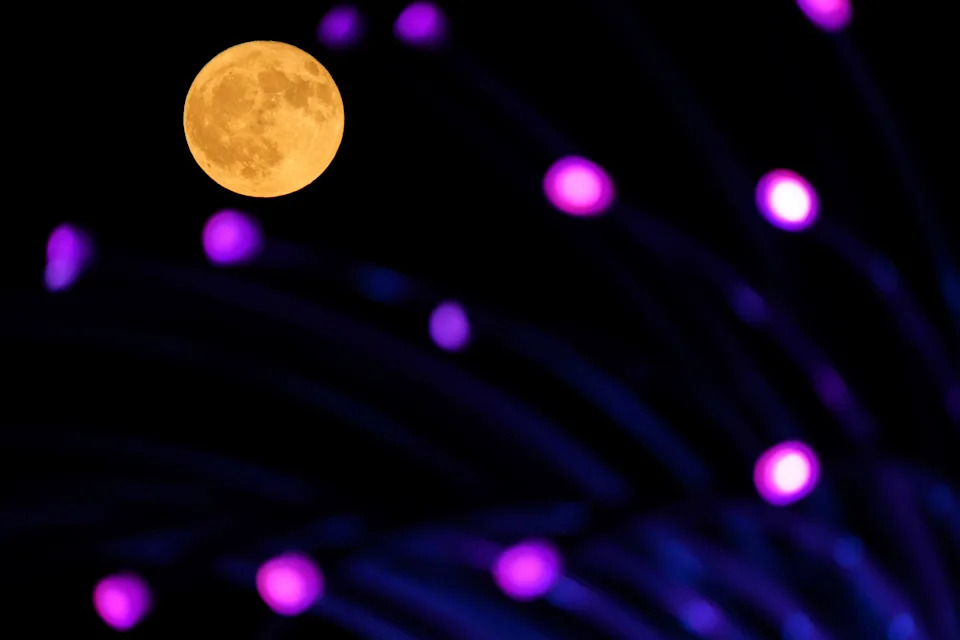 The buck moon rises above an art installation at a park in Leawood, Kan. (Charlie Riedel/AP)
The buck moon rises above an art installation at a park in Leawood, Kan. (Charlie Riedel/AP)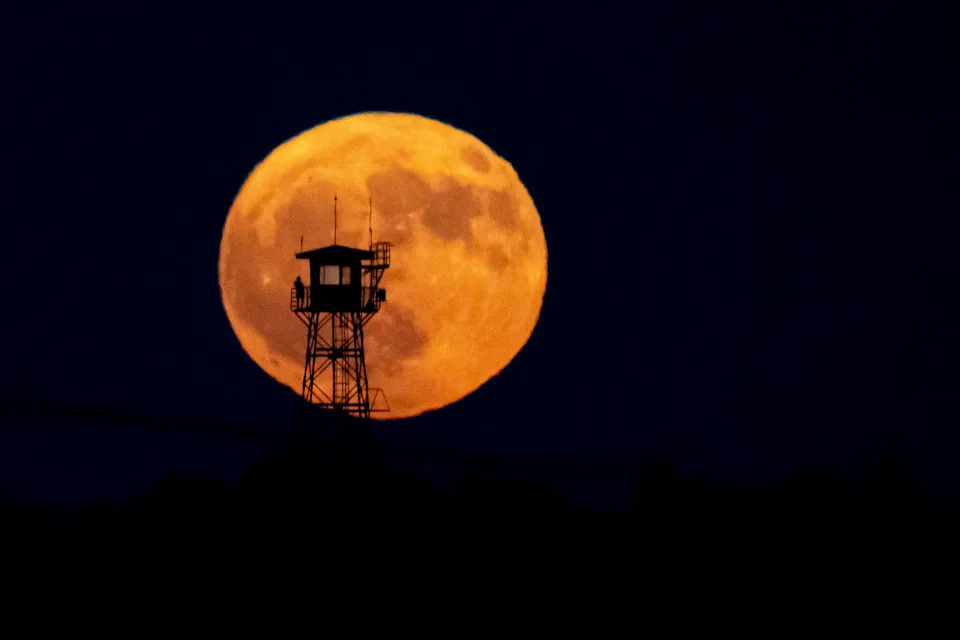 A lookout watches the moonrise from a wildfire surveillance tower in Madrid. (Marcos del Mazo/Getty Images)
A lookout watches the moonrise from a wildfire surveillance tower in Madrid. (Marcos del Mazo/Getty Images)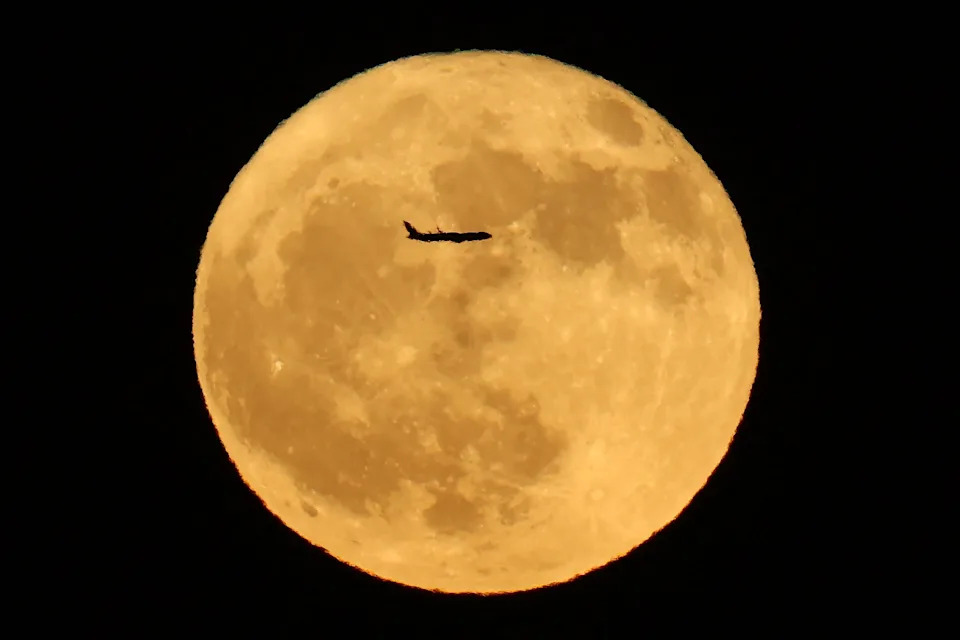 The silhouette of a plane crosses the full buck moon in Adelanto, Calif. (Patrick T. Fallon/Getty Images)
The silhouette of a plane crosses the full buck moon in Adelanto, Calif. (Patrick T. Fallon/Getty Images) 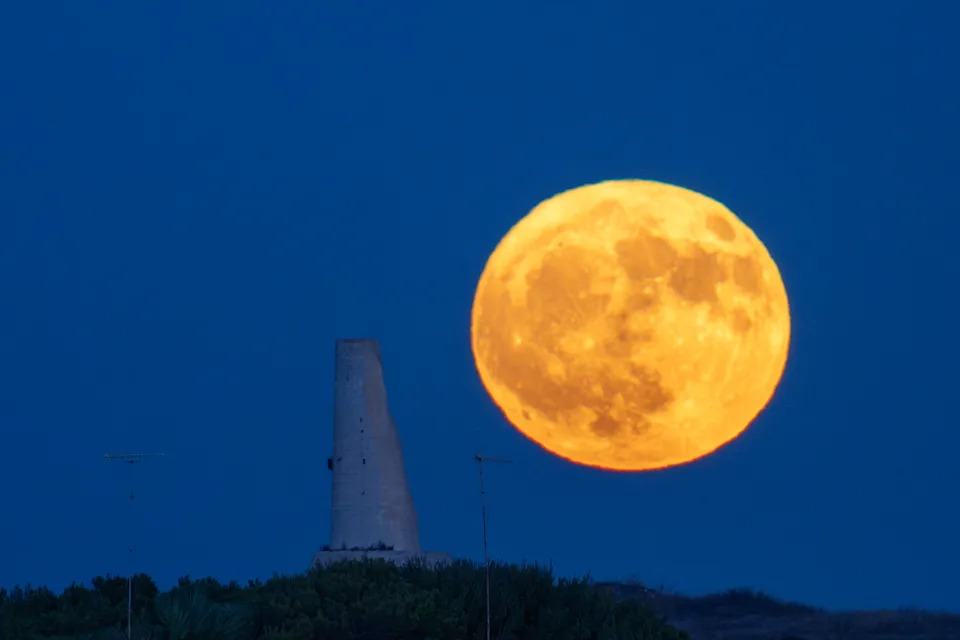 The buck moon rises behind Torre del Serpe in Otranto, Italy. (Manuel Romano/Getty Images)
The buck moon rises behind Torre del Serpe in Otranto, Italy. (Manuel Romano/Getty Images)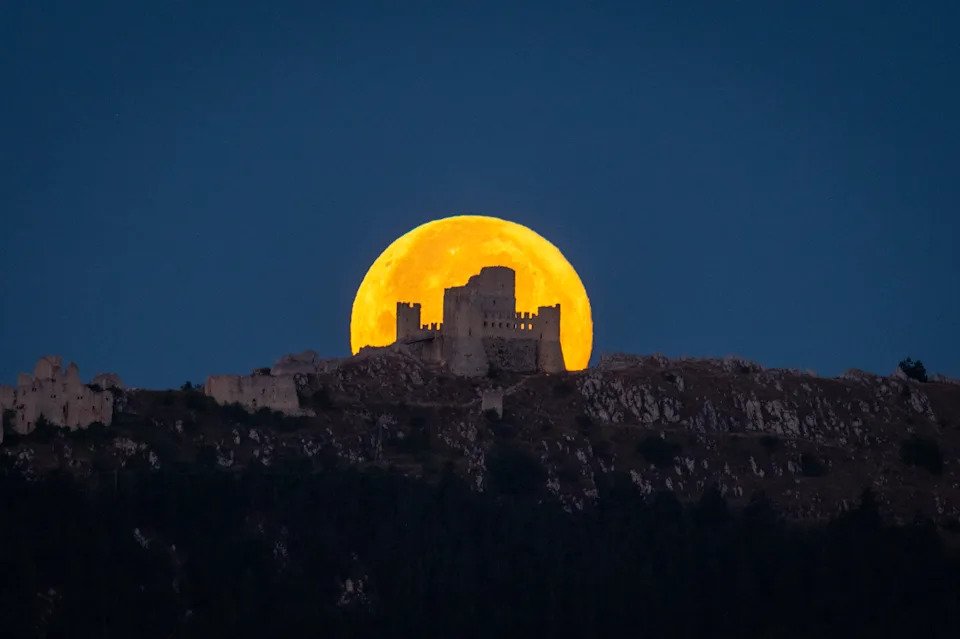 The moon sets behind the Rocca Calascio castle in Italy. (Lorenzo Di Cola/Getty Images)
The moon sets behind the Rocca Calascio castle in Italy. (Lorenzo Di Cola/Getty Images)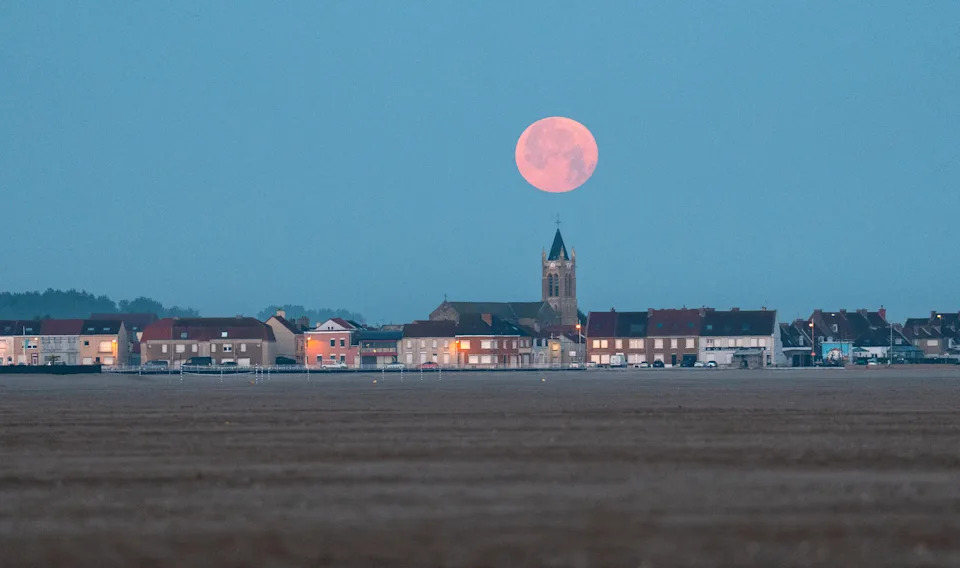 The buck moon hangs over the town of Gravelines, France. (Carl Court/Getty Images)
The buck moon hangs over the town of Gravelines, France. (Carl Court/Getty Images)













